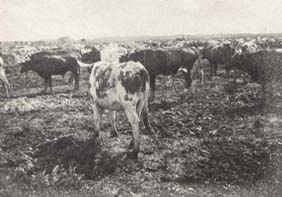
The "Urban" Cowboys of Gilley’s fame are not that far removed historically from the "real" cowboys of our past. At the turn of the Century the Pasadena area was cattle country in every sense of the word. One of the largest ranches in southern Texas covered 12,000 acres beginning westward from Scarborough Street on Pasadena’s west side and extended westward and southward. Allen’s cattle ranged over an even larger area, including present day Pasadena, La Porte and Clear Lake.

Like Sam Houston and many of his freedom fighters Sam William Allen came to Texas from Tennessee. He came alone in 1842, a lad of 16, but a man by the standards of the time, to find his fame and fortune in the new Republic of Texas. The trip through Texas had been easy enough since the Caddo Indians along the eastern border were peaceable and the Karankawas of the Gulf Coast avoided the white man. However, from the crossing of the San Jacinto River at Lynch’s Ferry until he reached Houston via the Harrisburg Road Sam could still sense the excitement of the battle at the McCormick's place on the plains of San Jacinto where the Texians had won their freedom from Mexico. The cattle on the range were still gnawing on the bones of those that had fallen in the battle and had not been buried. Little did he realize that much of the land over which he traveled from there at the San Jacinto Battlefield to Houston would someday belong to him and his family.

Sam's interest in cattle and ranching was fused with the land when he met and married Rebecca Thomas two years later in 1844. Rebecca's father and great uncle were members of Stephen F. Austin's original "300" settlers who had come to Texas in 1822 when it was only a "department" of the Spanish colony of New Spain. The Thomas and Callahan Leagues straddled Buffalo Bayou at the mouth of Sims Bayou. With Sam's energy and interest in cattle raising the "Allen Ranch" began.
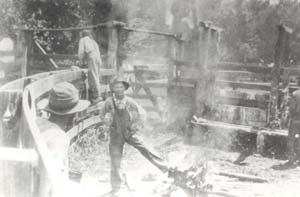
At its peak, the Allen Ranch included over 12,000 acres in Harris county, 11,000 in Brazoria county, and had holdings in Galveston county, Fort Bend county and as far west as Columbus. The Ranch extended on the east from the present site of Houston Light & Power's Deepwater Plant on the Houston Ship Channel (then called simply, Buffalo Bayou) to the future Telephone Road on the west. Harrisburg was its northern boundary and it included the current site of Hobby Airport on the south, with sections of the present Ellington Air Force Base and Friendswood. When the railroad was completed in 1859 that linked Houston and Galveston it bisected the Allen Ranch. Sam strung 26 miles of fence along the right of way from Harrisburg to League City to keep his cattle off of the tracks. You can walk on the top rail of that fence the entire distance and not touch the ground. Allen moved his ranch headquarters near the railroad at the edge of the tree line along Berry Bayou and Old Galveston Road. He called his home “Dumont," and the railroad established a stop at Allen’s new loading pens. Until the railroad station at South Houston was torn down in the 1960's it still bore the name of "Dumont."
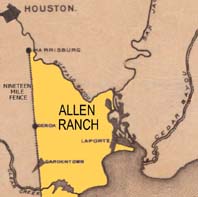
Sam and Rebecca built a two-story southern plantation house with huge white columns and a full balcony across the front. It was quite a showplace and was the scene of several "society" weddings. The grandeur of the place was well remembered and enhanced upon when Sam's son was to later take over the ranching operations. In those days Rebecca would travel to Galveston to do her shopping since the Island City was the financial and fashion capital of the southwest. Cattle were his business and he dominated the market. Sam Allen had the largest ranch by far and he was into every facet of the business. He would purchase thousands of calves from East Texas each year and ship thousands of finished cattle. He shipped by rail and by water. He laid his own private spur track and had his own wharves. He arranged an exclusive shipping contract with the Morgan Ship Line and organized Allen & Pool, as one of his shipping companies. Each year he would ship 5,000 head of cattle to Cuba alone .
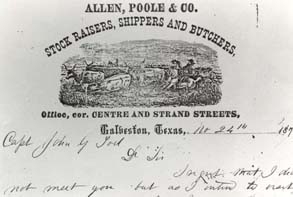
The Allen spread hired hundreds of cowboys to help run its operation. They would go on extended cattle roundups with the obligatory chuck wagon. Since Texas at the time was an Open Range state the cattle ranged over 100,000 acres, identified by the Allen "Toadstool" brand. Some of the cattle were moved to the other "pastures" in Brazoria, Galveston and Fort Bend Counties for winter and spring grazing, and then moved backed to the main ranch to be shipped. The hides from those cattle that did not survive to be sold were processed at Allen's Tannery, the first on Buffalo Bayou. If the Army needed horses, a big round up was staged. Wild horses roamed the San Jacinto battlefield and were herded into the nature trap formed by Horse Pen Bayou (a branch of Armand Bayou).
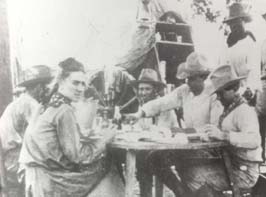
Sam W. Allen turned the ranching operation over to his son, Sam Ezekiel Allen in 1881 and the headquarters of the Ranch was moved to the current the site of Lyondale-Citgo Refinery on the Houston Ship Channel and the Texas Independence Highway (State Highway 225). Sam E. had married Rosa Lum in 1874 and had built a large fifteen room colonial he modeled after the old Lum Plantation house in Natchez, Mississippi. They named their home "Oaklawn," and became a very popular social center. It was quite a show place, with its forty-acre "front yard", the extensive landscaping running tap water in each room (a good forty years ahead of the times), tennis courts and a private horse racing facility. However it was a while before screens for the windows became available in Houston, so everyone had to sleep under mosquito nets to survive the nights!
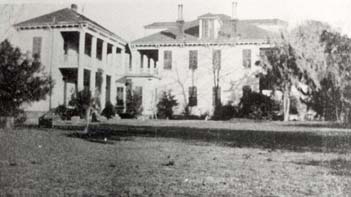
Like his father, Sam E. was very progressive in business. Light weight cattle were sold to West Texas ranchers for "finishing," much like the feed lot operations of today. He was one of the first in Texas to import Brahmas in order to upgrade the quality of beef cattle. Allen supported the commercial development of Houston and was one of the founders of what was to become Texas Commerce Bank (Chase Bank). He gave land to the newly formed Houston Port Authority so that Buffalo Bayou could be dredged into the now famous Houston Ship Channel. He encouraged the construction of the railroad, over his ranch lands, from Harrisburg to La Porte in 1894, and built his own private railway station, "El Buey." As Pasadena began to develop in the late 1890's many of the early settlers worked on the Allen Ranch and many more could boost of personal friendships with the Allens.
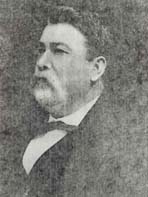
When Sam E. Allen died in 1913 the end was near for ranching in Harris County. The Allens were one of the largest taxpayers in the county at the time and they knew the land was becoming more valuable for other uses. The farming community of Pasadena was growing rapidly on the east and Houston/Harrisburg was spreading out on the west. Rosa Allen decided to dismantle the Ranch and began giving some of it to the children and selling off the rest. In 1917 she sold the home place and 700 acres to Sinclair Refining Company (later called ARCO and now Lyondale-Citgo Refinery) for one of the first oil refineries on the Ship Channel. Industries and homes began to hold fast the land that once supported a Texas Legend.
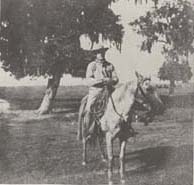
Petro-Tex, Tenneco, Goodyear and Houston, Light and Power took ground. Allendale, Park Place, Meadowbrook, Glenbrook Valley and other subdivisions provided houses for the thousands of people that replaced the thousands of cattle that once called the land home. Even in 1920 the Allen herd numbered well over 10,000 head. "Little Sam" (Sam Milton Allen) lived for a brief period on Richey Street in Pasadena in a house he received as a belated wedding gift. The Allen Ranch was finally dissolved in the late 1940's when the 11,000 acres in Brazoria County (five miles along the San Bernard River) were sold.
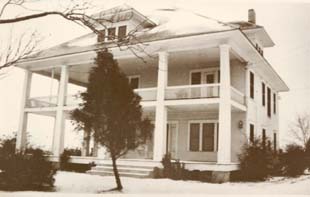
Pasadena has passed her centennial and can look back on a condensed history that has gone from frontier, to ranching, to farming, to industrialization and now into space technology. The Cowboy ruled for the longest time and his image still lingers on. The cowboys of our past have rode the range, the cowboys of the future will ride the stars. Pasadena is in the middle of it all.
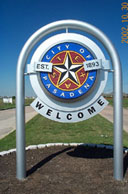
Read more about it in the New Handbook of Texas
Visit the Texas Historical Marker for the Allen Ranch
Return to Pasadena Home
1.08.2017